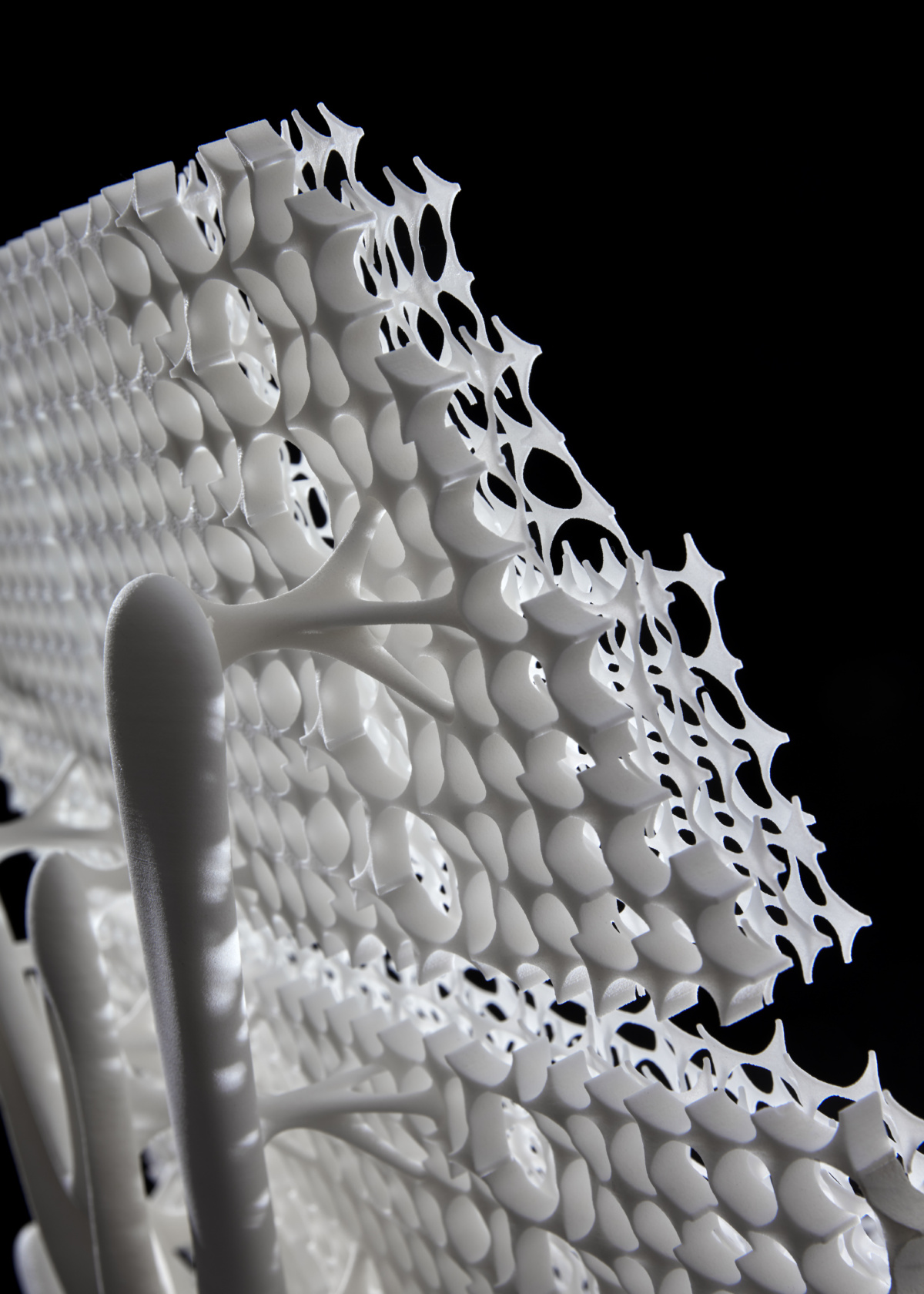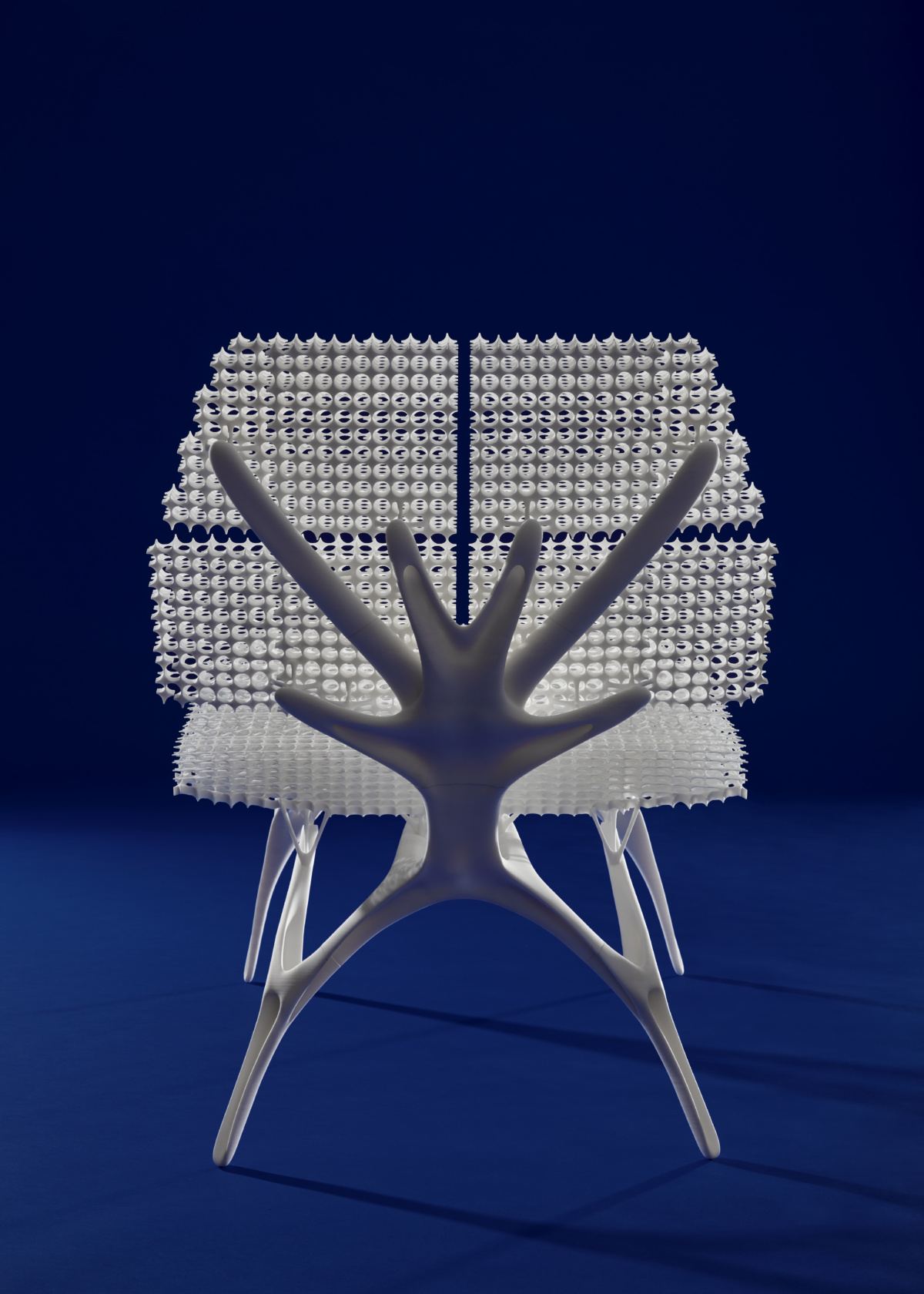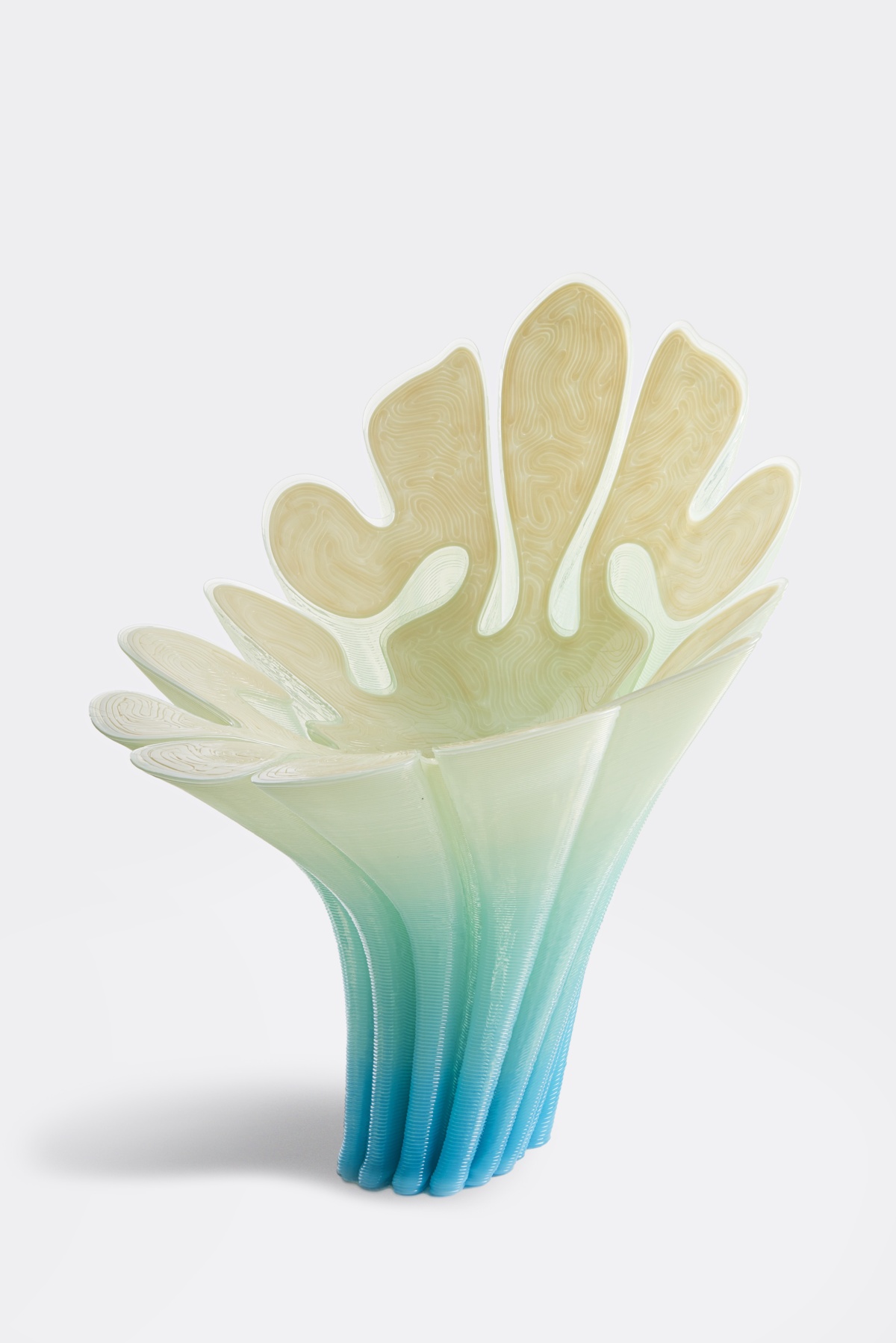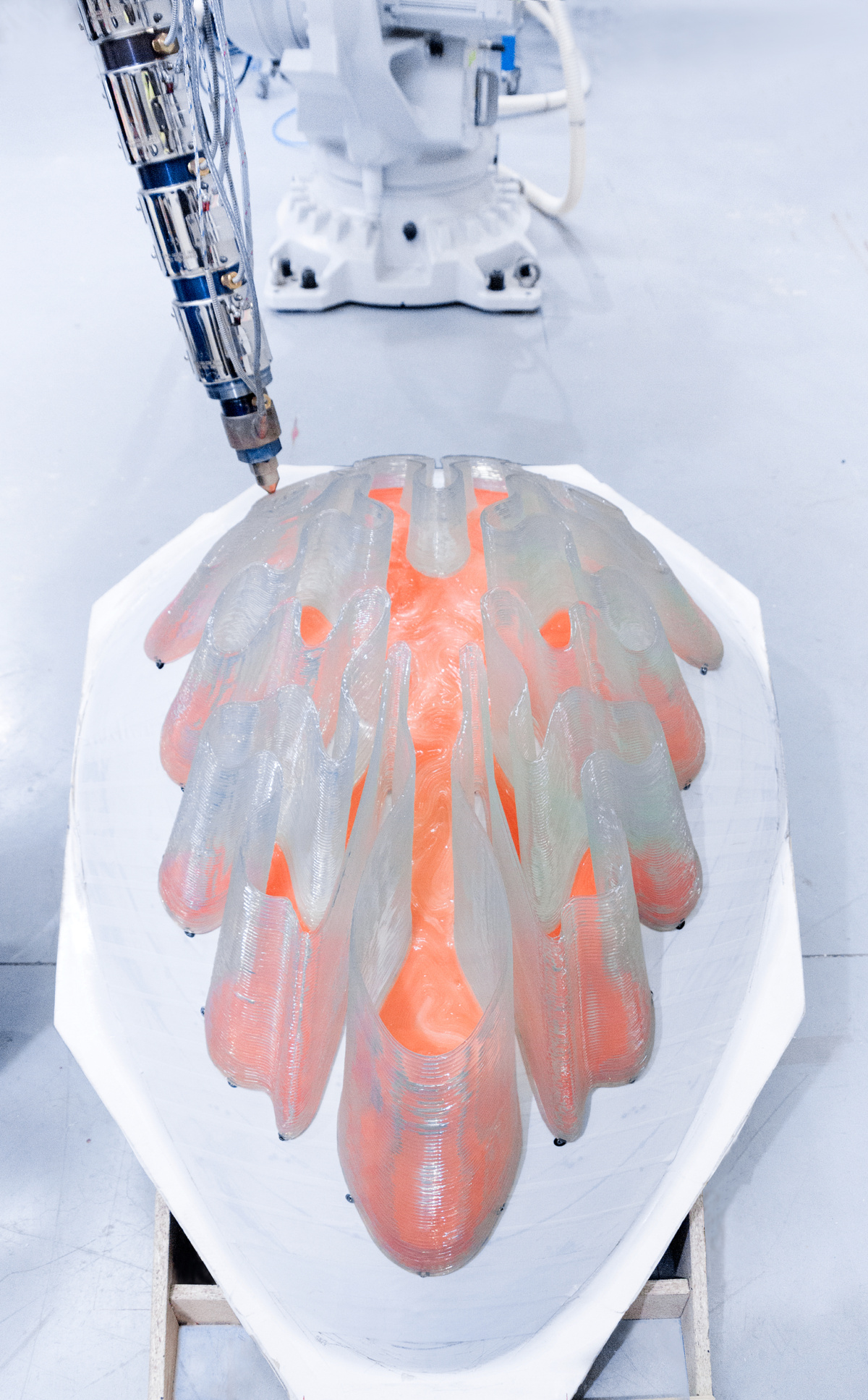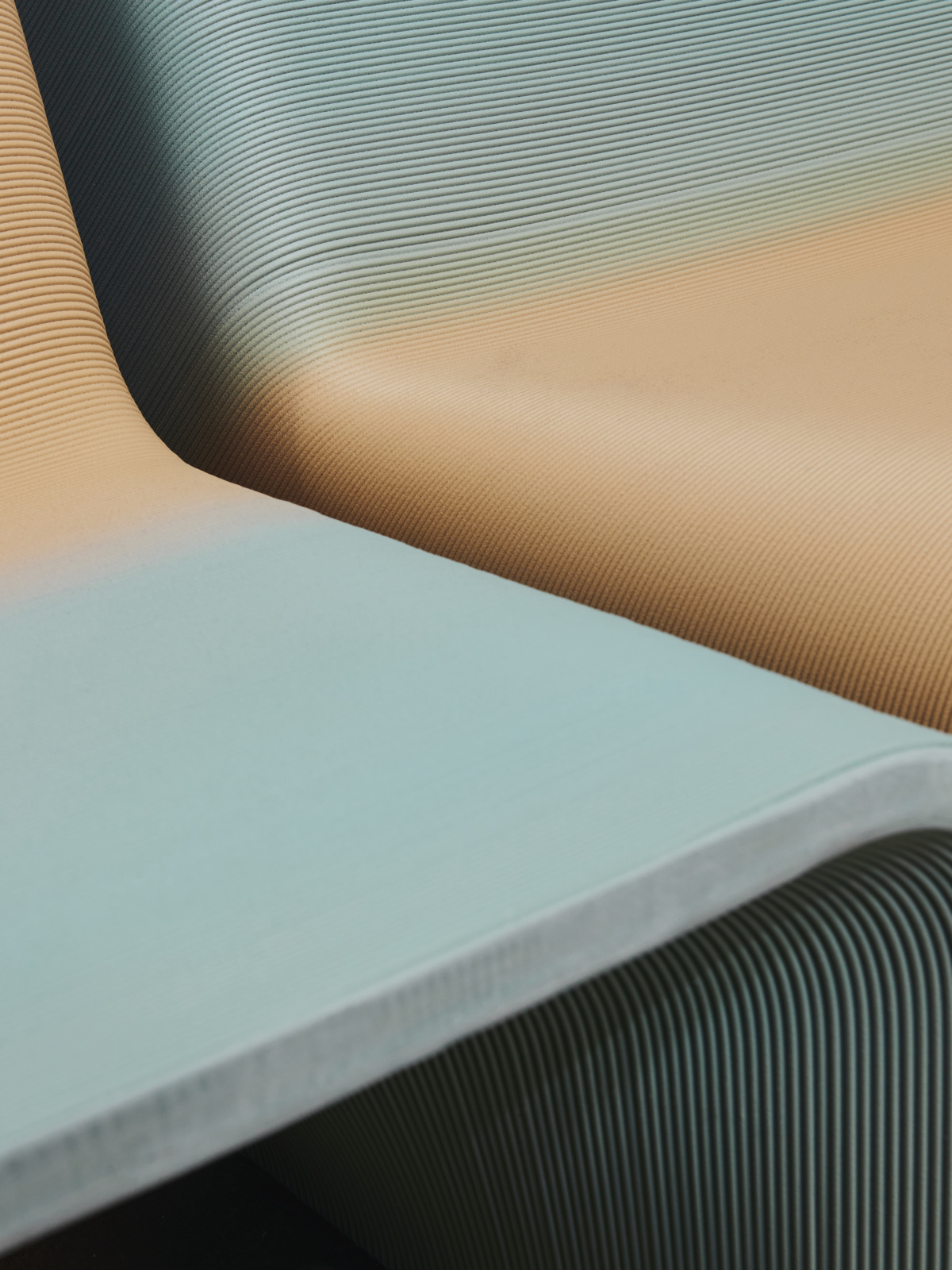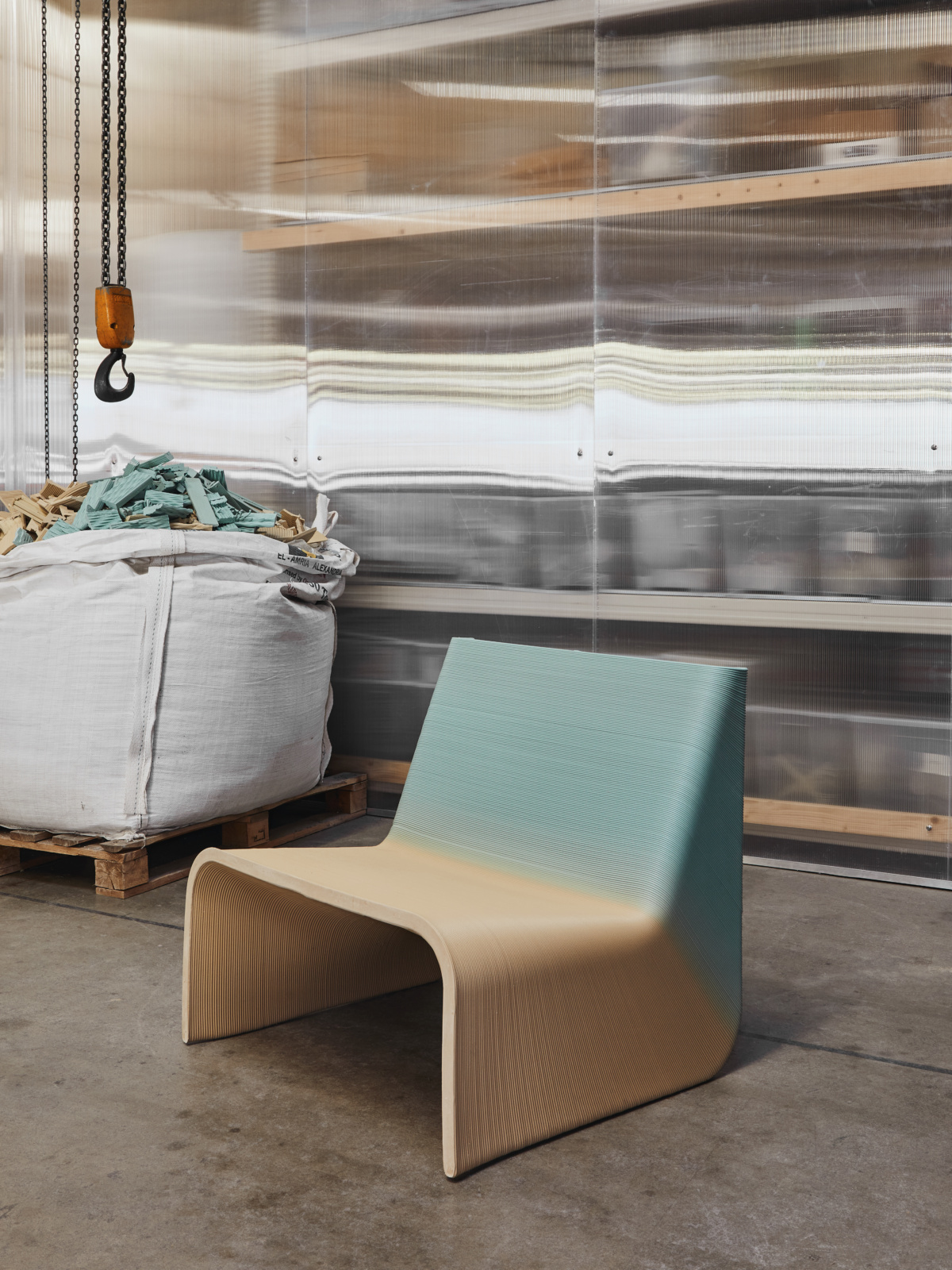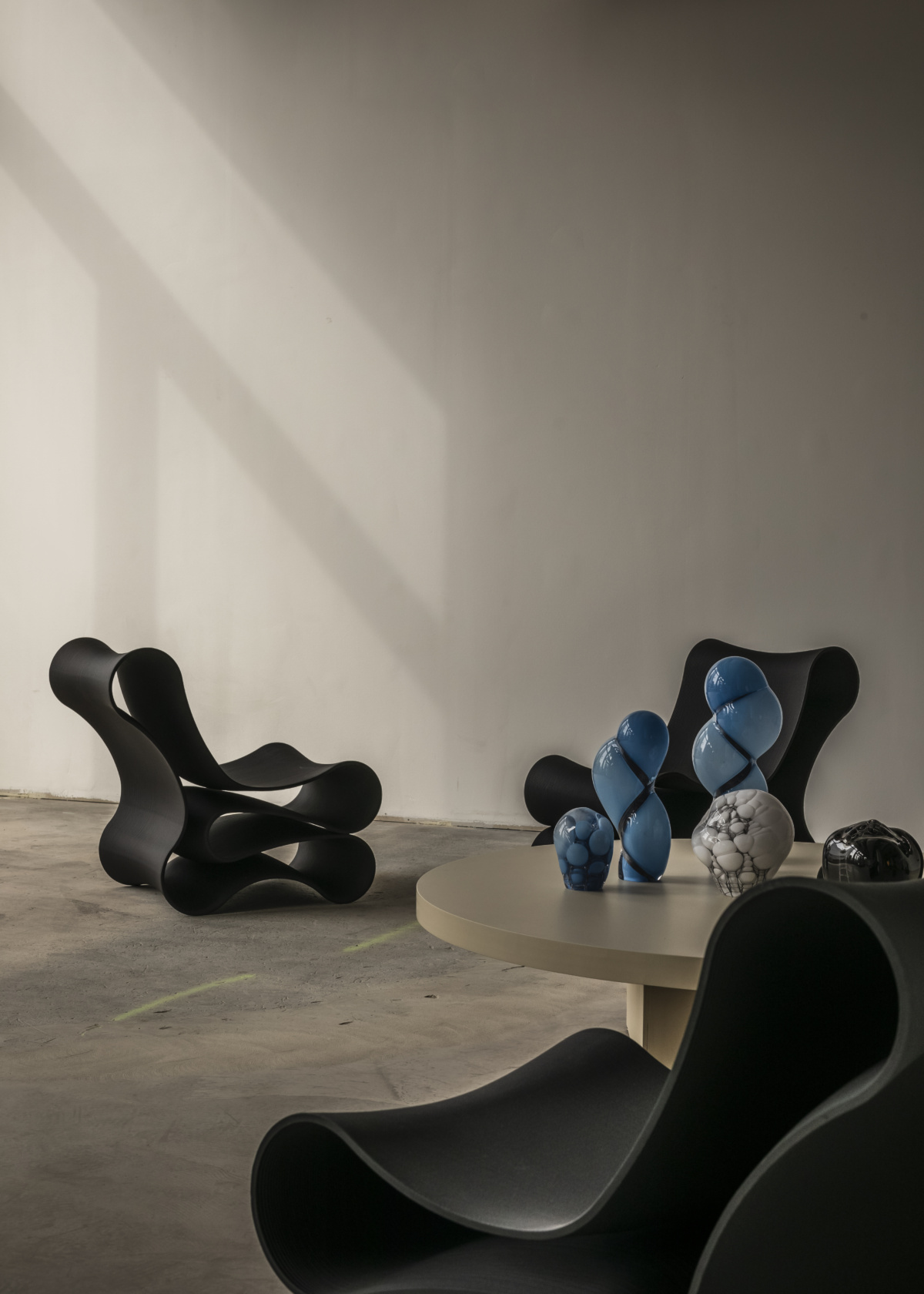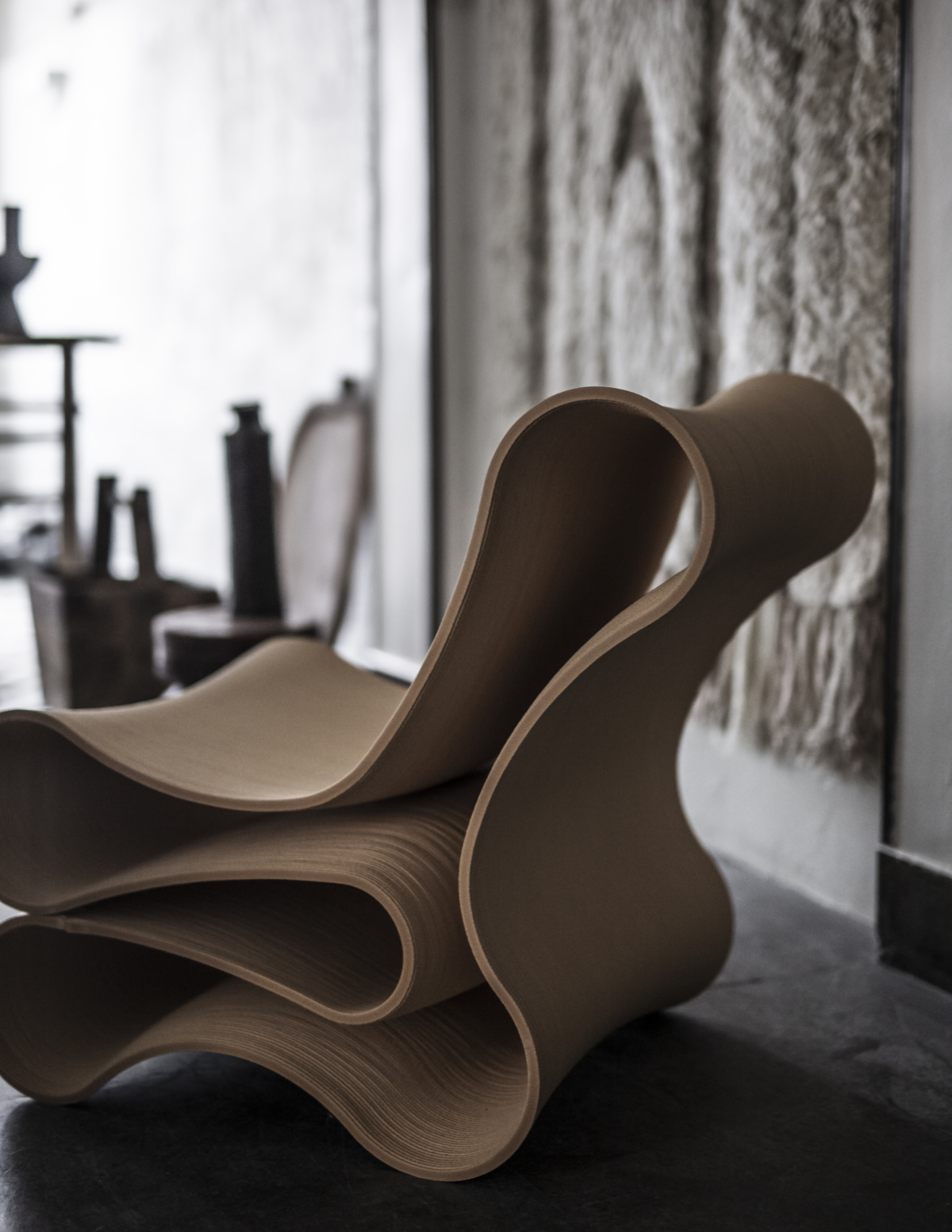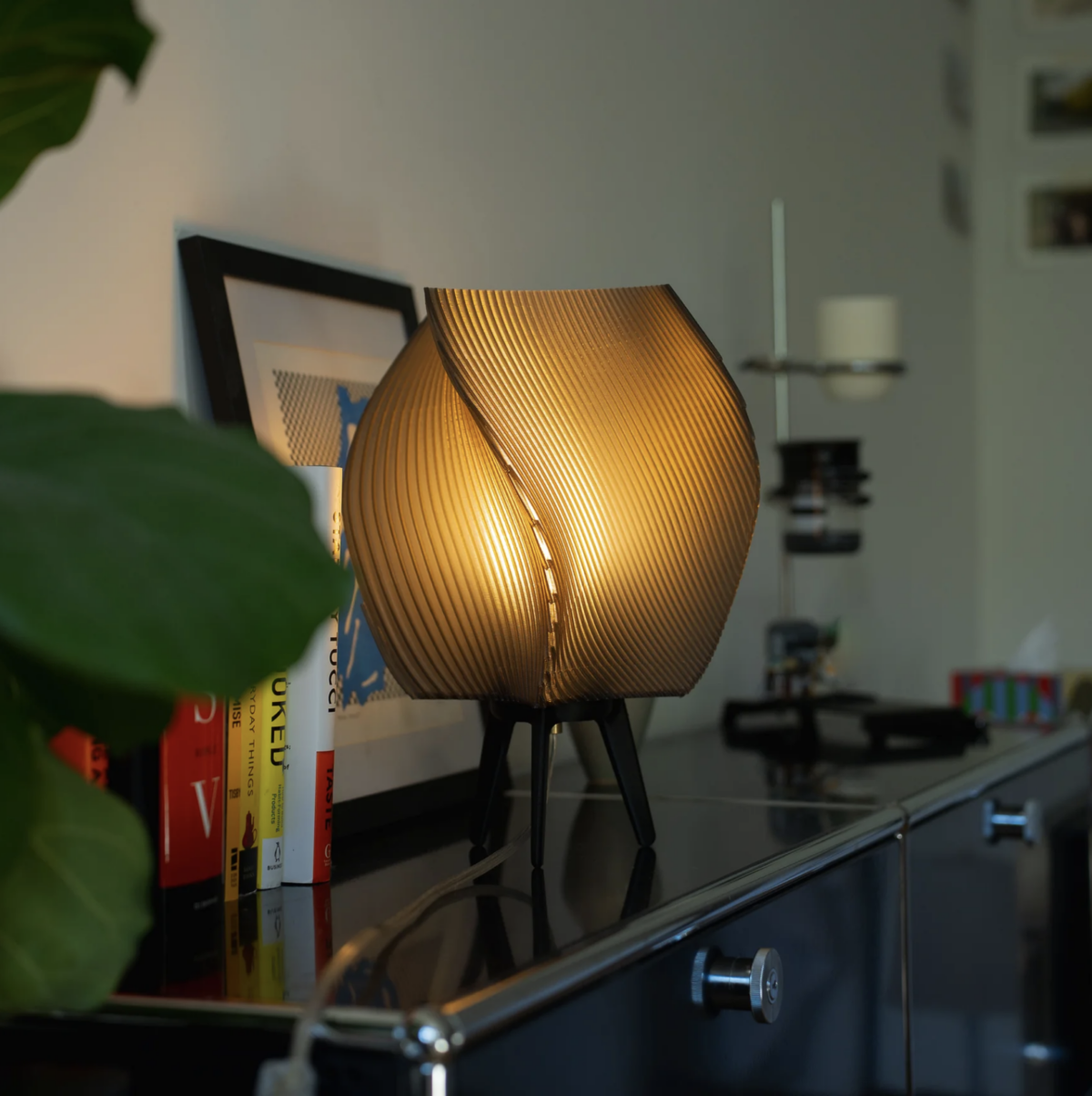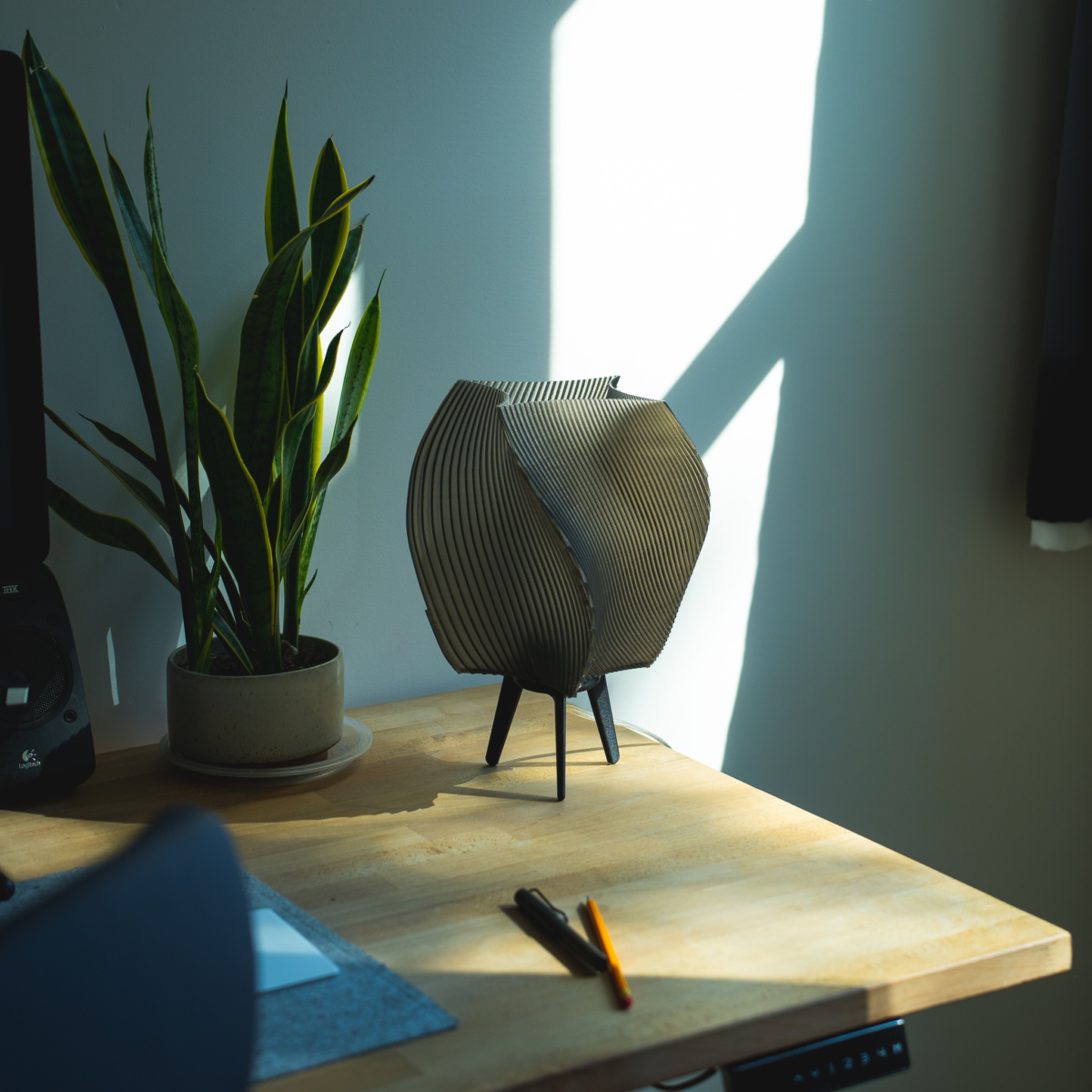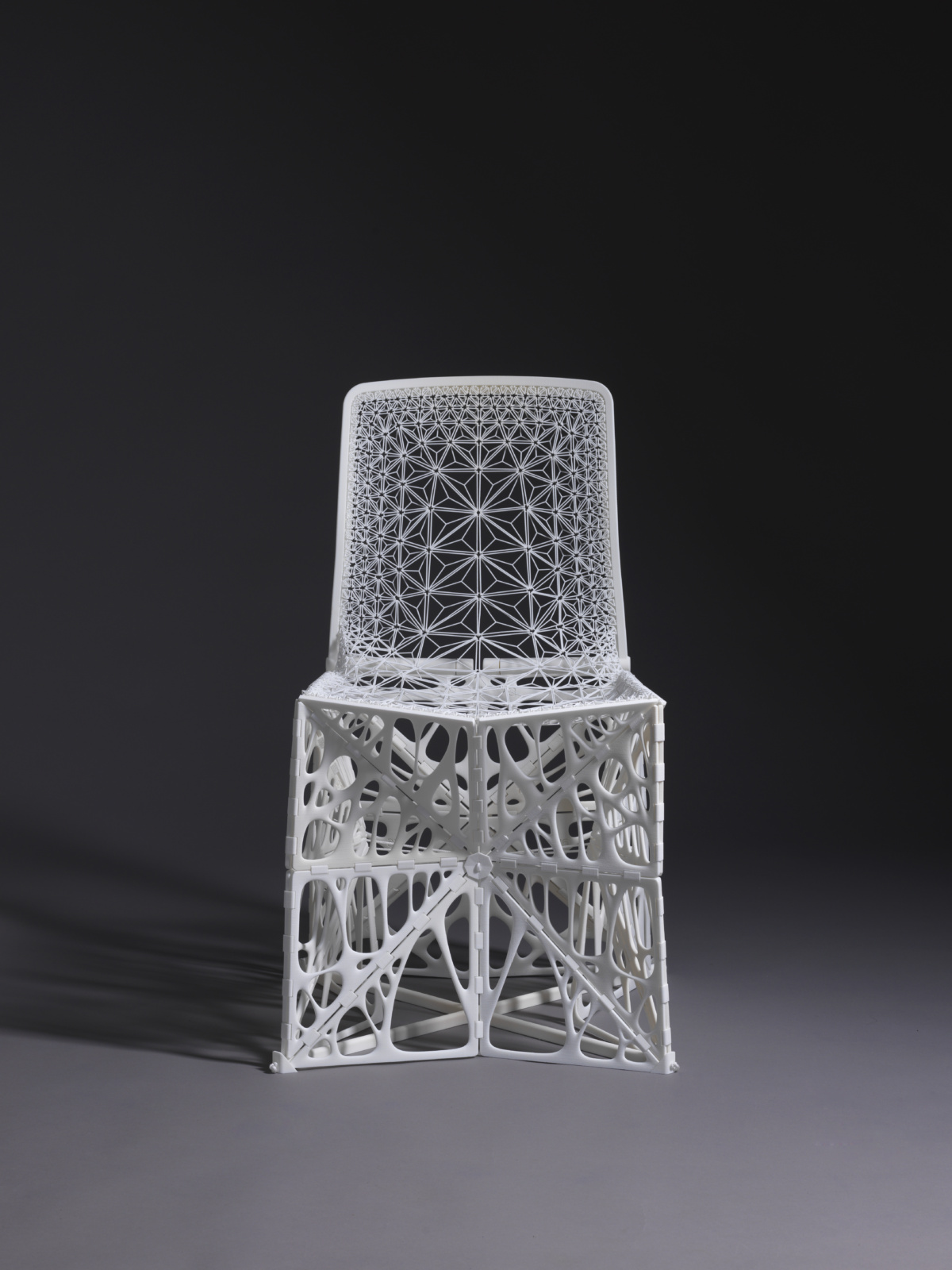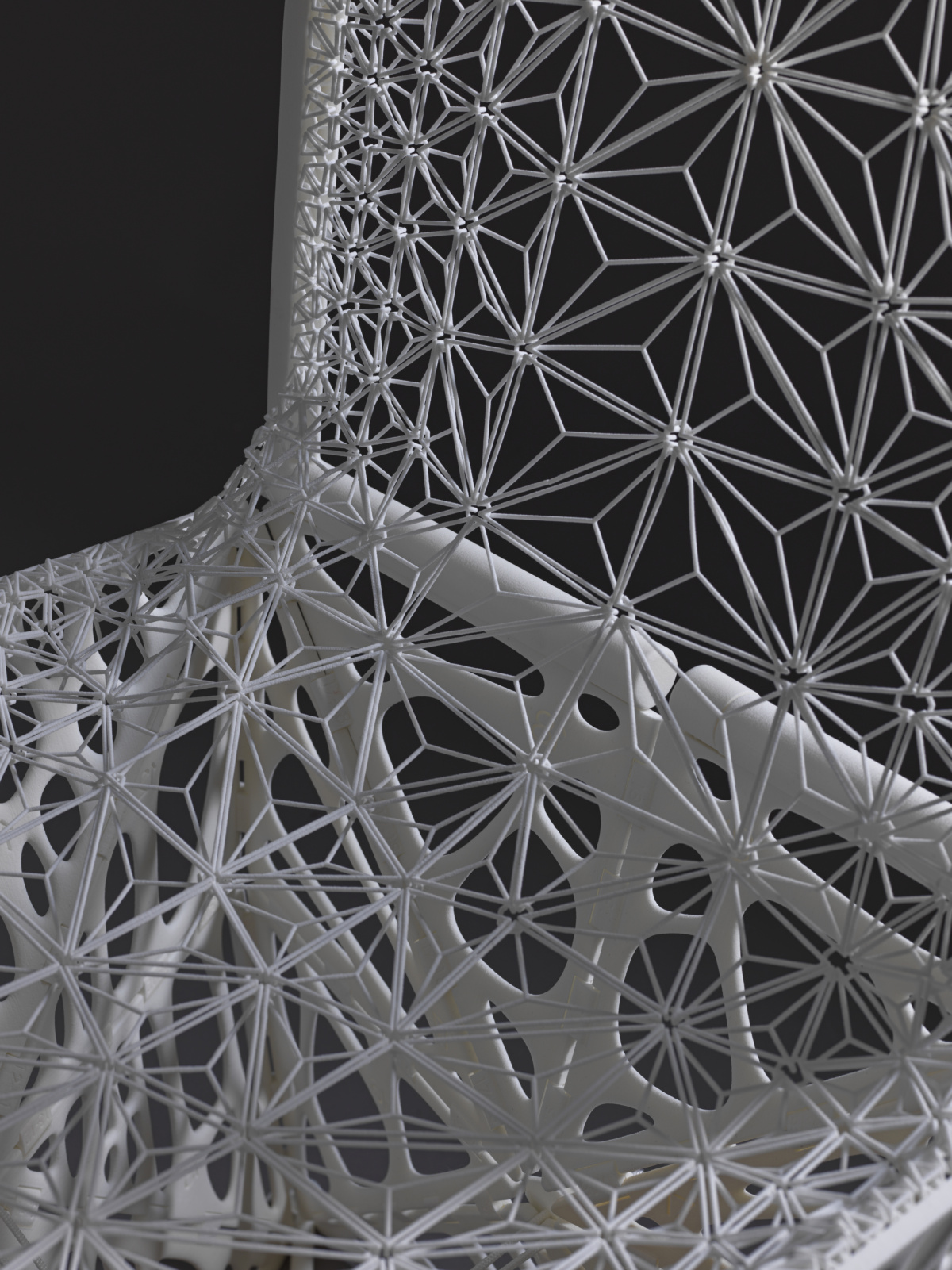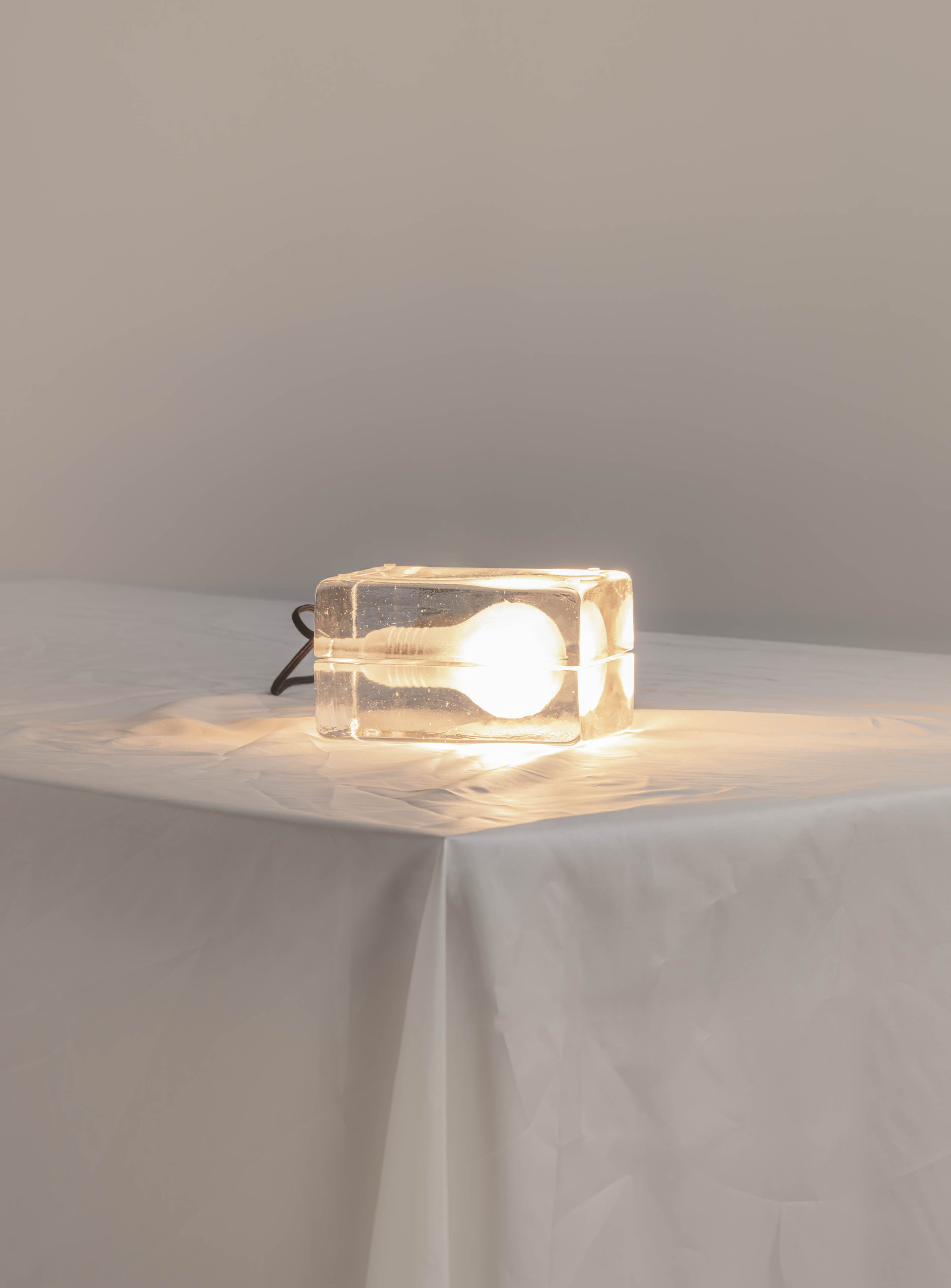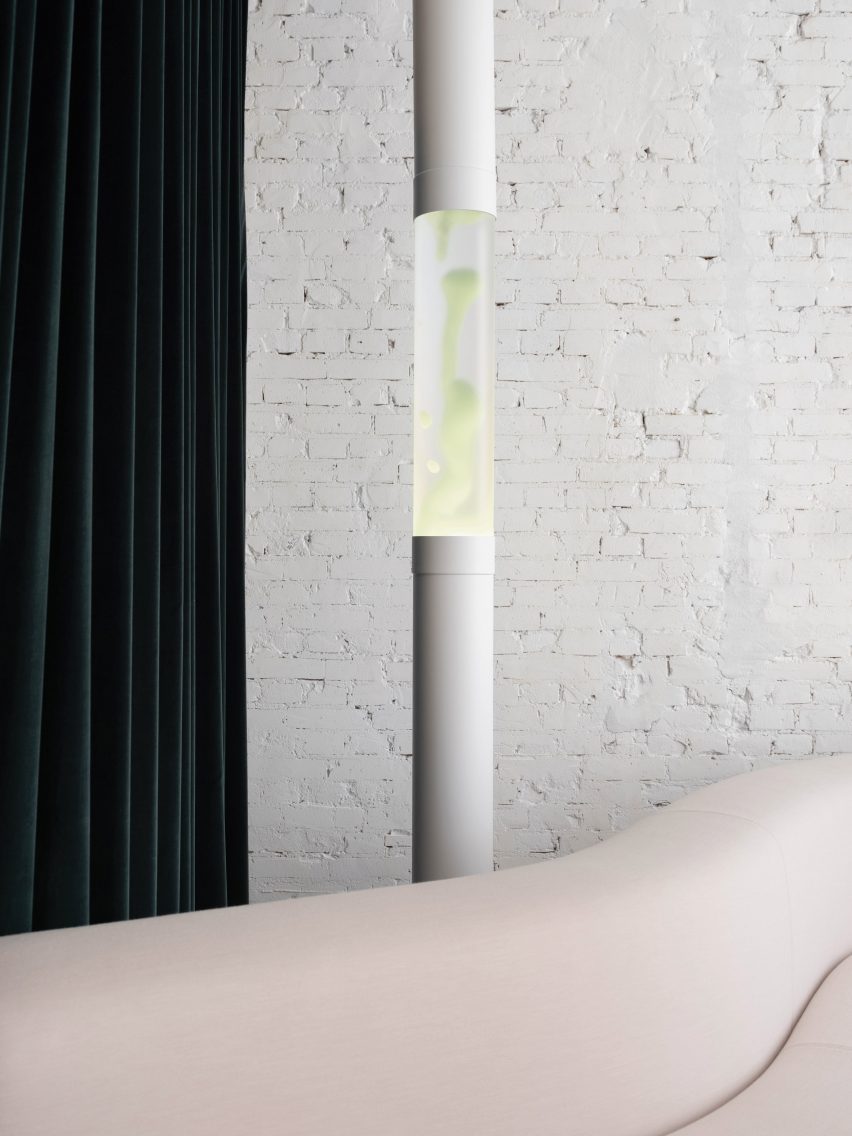Design something, upload a file, press a button. A few hours later you have a chair—or, more likely, a first draft. The world of 3D printing is hardly new at this point, with everything from tables to vases being created, layer by layer. The technology is exciting because of the way it can create structures that would be impossible to construct any other way, reduces production waste substantially, and allows for quick prototyping and iteration.
3D printing is unlikely to drive traditional furniture making out of business, but as the technology becomes more commonplace, it also becomes better and more beautiful. Designers using the machines are able to create dynamic pieces with great creative expression. Take Audrey Large, whose wild, twisting, futuristic-yet-Baroque designs come from computer into reality through 3D printing. The more digital her process, the wider her creative possibilities become. Her sculptural works are one example—but let’s look at the 3D-printed furniture that is changing the way we ideate, make, and interact with furniture and lighting today.
1. Radiolaria by Lilian van Daal
- Photo by Lonneke van der Palen
- Photo by Lonneke can der Palen
Lilian van Daal designed Radiolaria in 2018 as an extension of her exploration of soft-seating and new, sustainable technologies modeled after nature’s laws. The chair is 3D-printed in recycled polyamide provided by Oceanz 3D printing in a form inspired by unicellular organisms called Radiolaria and Bryozoa. Radiolaria are ocean zooplankton with a symmetric, skeletal spine—which is scaled up in the chair’s structure. Bryozoa are moss living in tropical and fresh waters. Their latticed skeletons inspire the connection points for the chair’s glueless assembly. The layered, symmetric structure and material of the chair offers flexibility, adaptability, firmness, and stability without foam or other traditional materials.
The chair follows Lilian’s Biomimicry Soft Seating project from 2014. But in the four years between, production time and energy consumption shrunk in half thanks to design optimizations that allow everything to be created in 3D printing run, and new material research by Oceanz to use recyclable materials for printing.
2. Rise Chair by Zaha Hadid Architects for Nagami
- Courtesy of Nagami
- Courtesy of Nagami
Zaha Hadid Architects is always on the cutting edge of new technologies and explorations—and the Rise chair for Nagami is no exception. ZHA designed Rise and its sister chair, Bow, in 2019 through extensive research and material experimentation with 3D printing.
Like Radiolaria, Rise is inspired by patterns found in nature. Like a flower on its stem, the chair bends into its weight-bearing shape. Nature’s structural optimization meets innovative materials: the chair is printed with a pellet-extruder using raw PLA—a nontoxic, biodegradable material made from renewable sources like corn starch. The pattern and color gradient aim to redefine the spatial relationship between furniture and its setting.
3. Ermis Chair by The New Raw
- Photo by Michele Margot
- Photo by Michele Margot
Designed in 2020, the Ermis Chair by The New Raw puts a monolithic spin on 3D-printed furniture design, which trends more towards organic, curvy forms. For a limited edition, the chair was made with waste from the brand’s in-house production waste in Rotterdam. The studio was driven to reduce the volume of waste generated through R&D—a necessarily wasteful process—in the design.
The simple, blocky yet ergonomic lines of Ermis are created with a single spiral plastic thread. The layers become the geometry of the chair, using minimal material to create strength as well as graphic texture on the chair. Differently colored batches of production waste give the chair its gradient. As the limited edition Ermis chair is made of recycled material without adhesives or coatings, it can also be recycled as raw material for the next project.
4. Squish Table Light by Studio BEBOP for Gantri
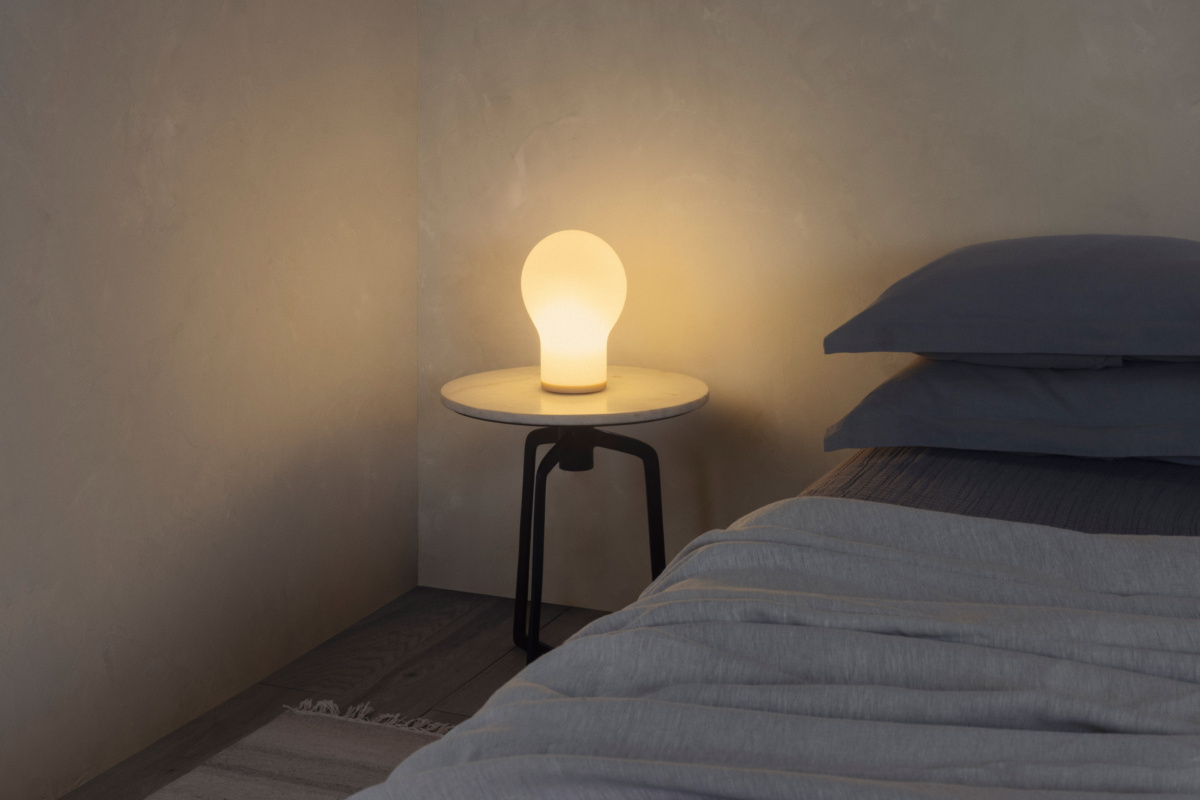
Courtesy of Gantri
Gantri is a creator-led brand working to redefine lighting with designs that leverage 3D printing to manufacture products efficiently and with less waste. The lights are made using proprietary material blends: Gantri Plant Polymers are plant-derived PLA blends engineered specifically for lighting design and emit no carcinogens and 75% less carbon than ordinary plastics.
Gantri works with designers with specific viewpoints to create lighting that is true to the designer’s vision using the 3D-printed plant polymers. Their Summer 2023 Independent Creator Release includes collections from Simon Schmitz, Joey Zeledon, Romulo Temigue, and BEBOP, the studio behind the new Squish table lamp. BEBOP, a creative studio based in Seoul and San Francisco, asked “How might a simple action affect such a classic shape?” to transform a common object—the basic lightbulb—into something entirely new yet still recognizable.
5. Gather by Model No.
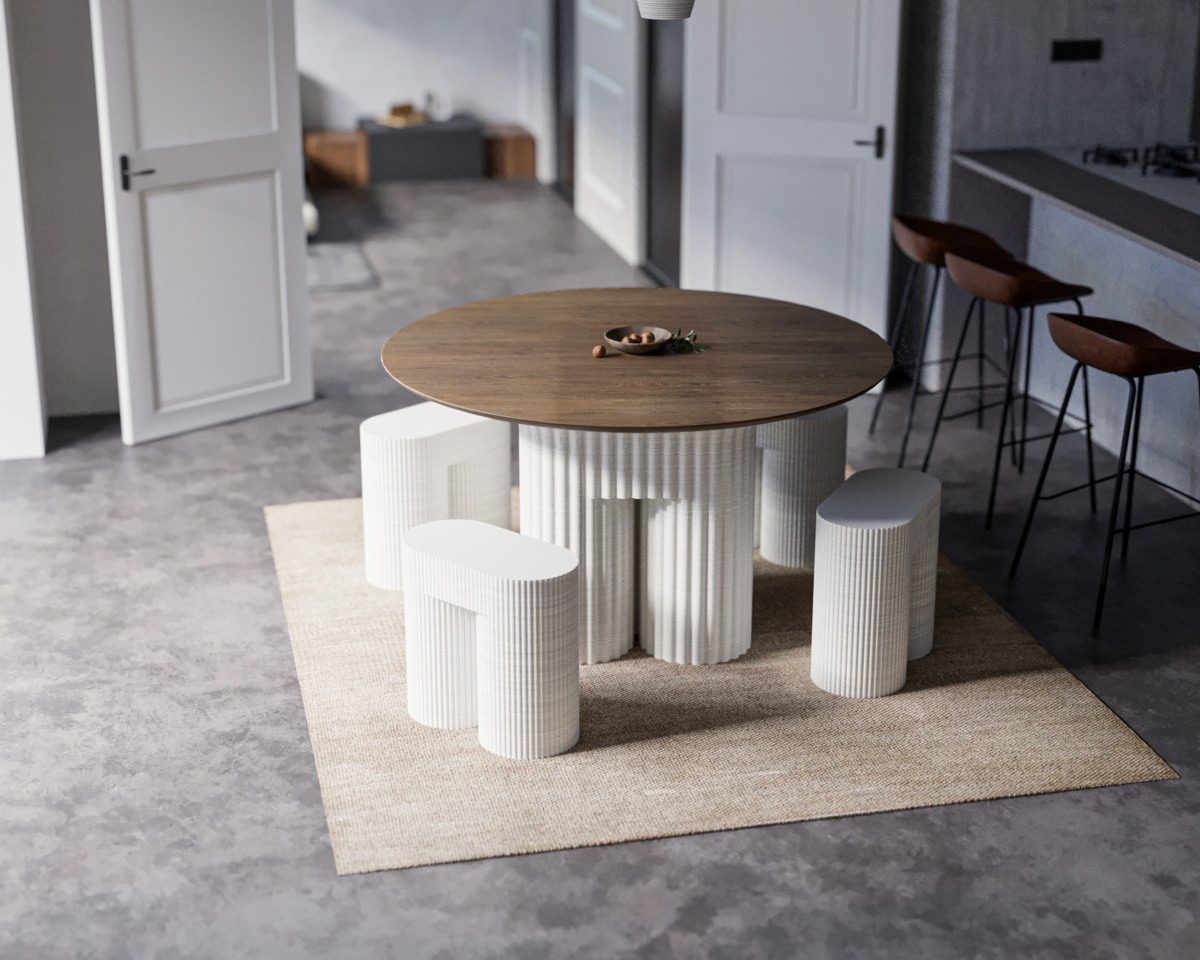
Courtesy of Model No.
Like Gantri, Model No. designs products that intend to change the way we relate to furnishings by reducing the waste and carbon emissions related to their production and life cycle. The Gather Collection is made using 3D-printed wood—which sounds impossible, right? In a process far removed from carving solid wood, Model No. combines biodegradable polyesters and plant-based resins with fine wood dust, made into pellets, fed to a large-scale 3D printer, and extruded in a paste that cools and bonds with the other layers to become the base of a stool, or a table. The table is then topped with salvaged hardwood.
The Gather Collection is Model No.’s first collaboration, made jointly with PROWL Studio, based in San Francisco. The Model No. and PROWL teams sat, talked, laughed, and drank at the table for hours, and noted the welcoming design made it perfect for gathering, giving it its name.
6. Reform Lounge Chair
- Courtesy of Reform Design Studio
- Courtesy of Reform Design Studio
The Reform Lounge Chair from Sweden’s Reform Design Lab is perhaps a more expected example of 3D furniture design. The lounge is printed on its side, giving the layers of additive material a vertical stripe texture once the chair is stood upright. The design folds on itself like an old fashioned ribbon candy, weaving its way into a beautiful reclined seat.
Designed by Jurih Rahimkulov and made of DuraSense®, a wood fiber-based biocomposite, the chair is a critical part of Reform’s aim to merge art, technology, sustainability, and luxury using large-scale 3D printing. The chair joined the studio’s displays at Salone del Mobile 2022 and Stockholm Furniture Fair in 2023.
7. Kelp Collection by Interesting Times Gang
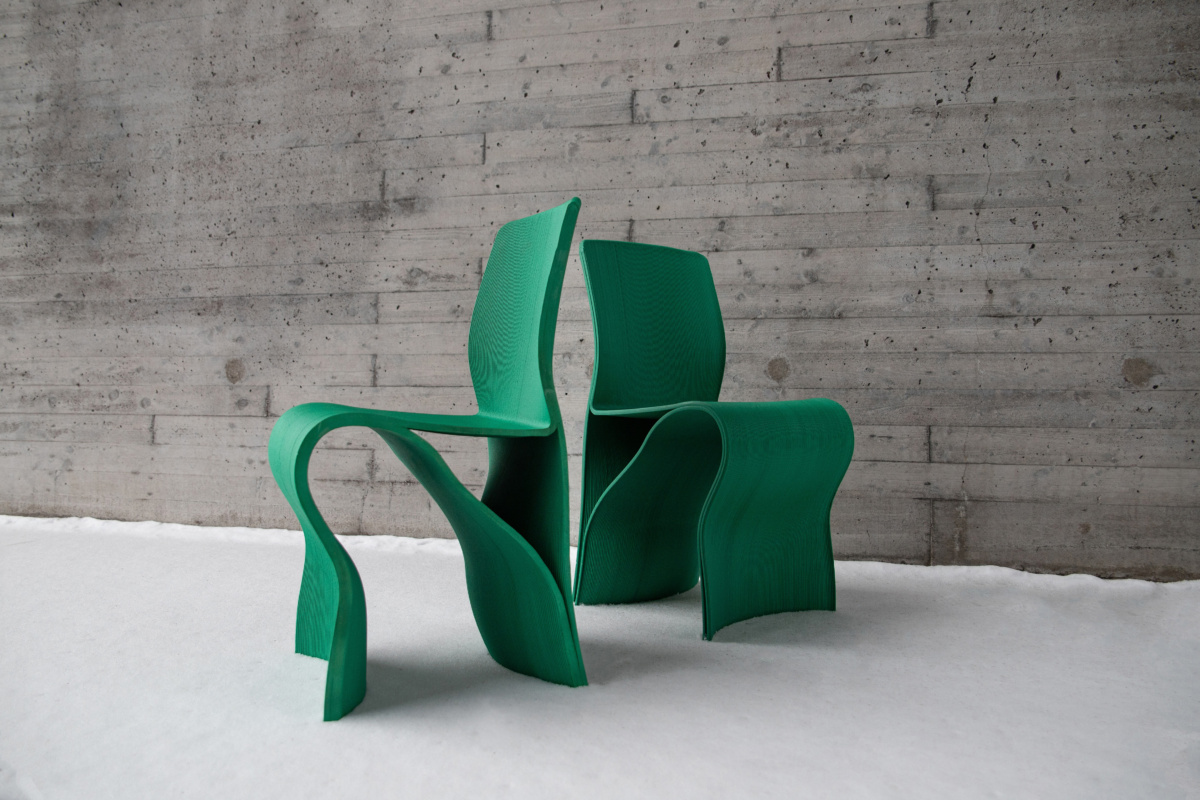
Courtesy of Interesting Times Gang
The Kelp Collection is a seating collection consisting of a bar stool, chair, and low stool in a deep, vibrant green. Its lines are inspired by the Swedish archipelago, curving and flowing like ocean vegetation in the tides.
Beyond resembling the billowing of ocean vegetation, the collection is made using recycled fishing nets and used maritime gear combined with wood fiber, pelletized and printed with the latest advances in 3D manufacturing. With this and other collections, Interesting Times Gang aims to raise awareness around waste and consumerism through new methods that make production more circular.
8. Desert Table by NYXO Studio
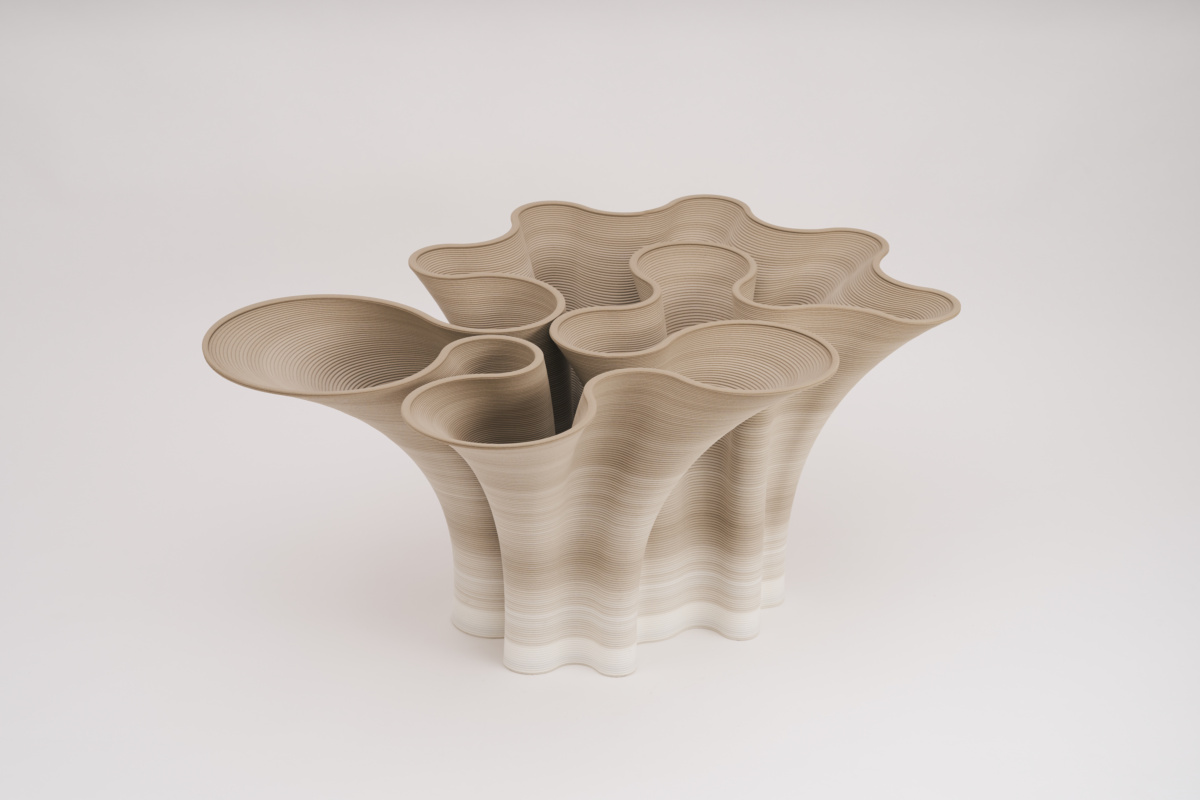
Courtesy of NYXO Studio
NYXO Studio designed the Desert table after the fossil dunes of the Emirati desert. Made of lightweight, low-density Foaming PLA, the table is sculptural in its generous curves that meet the glass tabletop. The studio draws a comparison between the layering of sand over time creating fossils to the layering of 3D printing to create the table, and relates the porosity of the PLA to the roughness of desert sand.
9. Zephyr Lamp by Wooj Design
- Courtesy of Gantri
- Courtesy of Gantri
A few years ago, the Wavy Lamp by Wooj was all over Instagram feeds. A PLA-based 3D-printed design itself, Wavy Lamp’s success has spurred Wooj to explore other ways to implement new technologies and materials in ethical design made by humans and robots in Brooklyn.
The new Zephyr lamp is perhaps the best example of this collaboration between tech and humans: it is the studio’s first foray into AI collaboration. In a back-and-forth with AI, the humans of Wooj generated a variety of forms and textures in digital files to be 3D-printed. The lamp’s dark shade allows the details of the texture to pop out as the light within brightens, creating a highly textural, ambient, decorative light. The studio hopes many more AI/human collaborations are to follow.
10. CORAIL by Roche Bobois
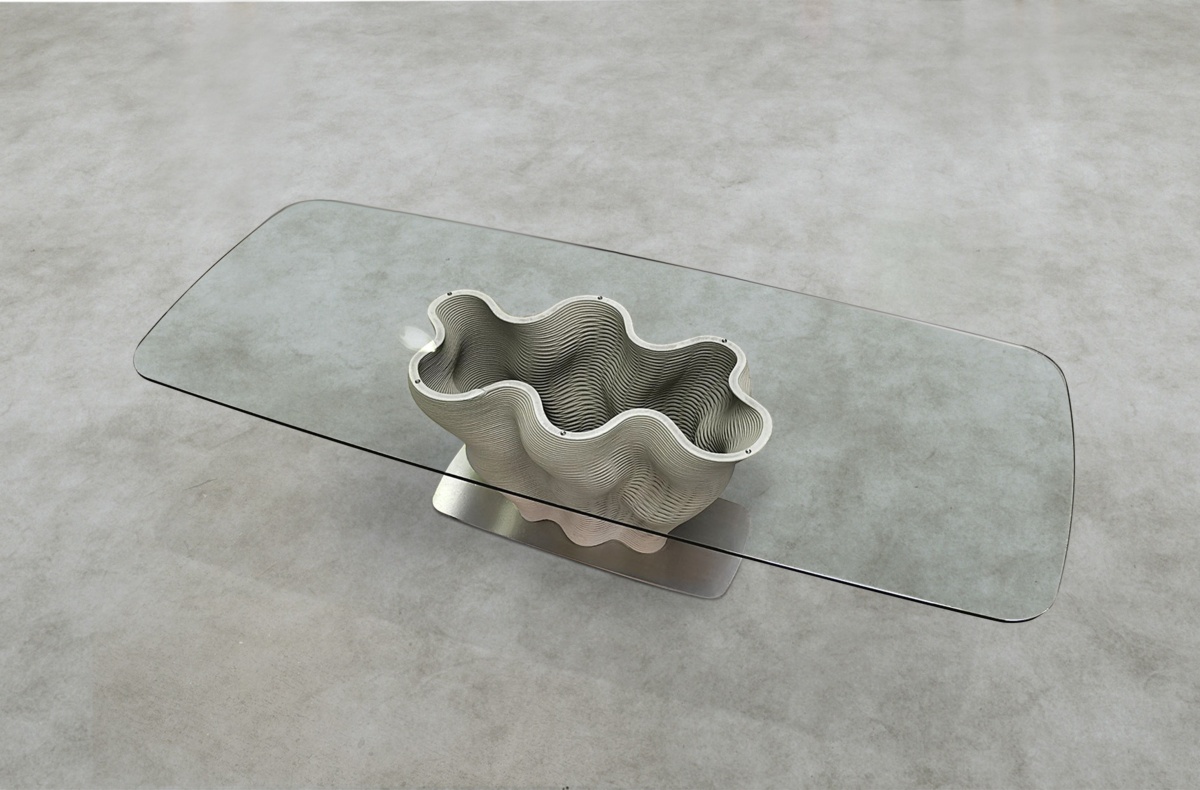
Courtesy of Roche Bobois
The Corail table by Antoine Fritsch and Vivien Durisotti for Roche Bobois is all about its 3D-printed, customizable concrete base inspired by coral reefs, polypore fungi in trees, and giant shells. Its particular brand of natural inspiration allows for imagination, its sculptural form adjusting to the owner’s specifications. Launched in 2020, the table can be customized in almost every sense: from its shape and size to the surface weaving effect. The base is made using a giant 3D printer and is left to set for 20 days.
11. Growth Collection by Mathias Bengtsson
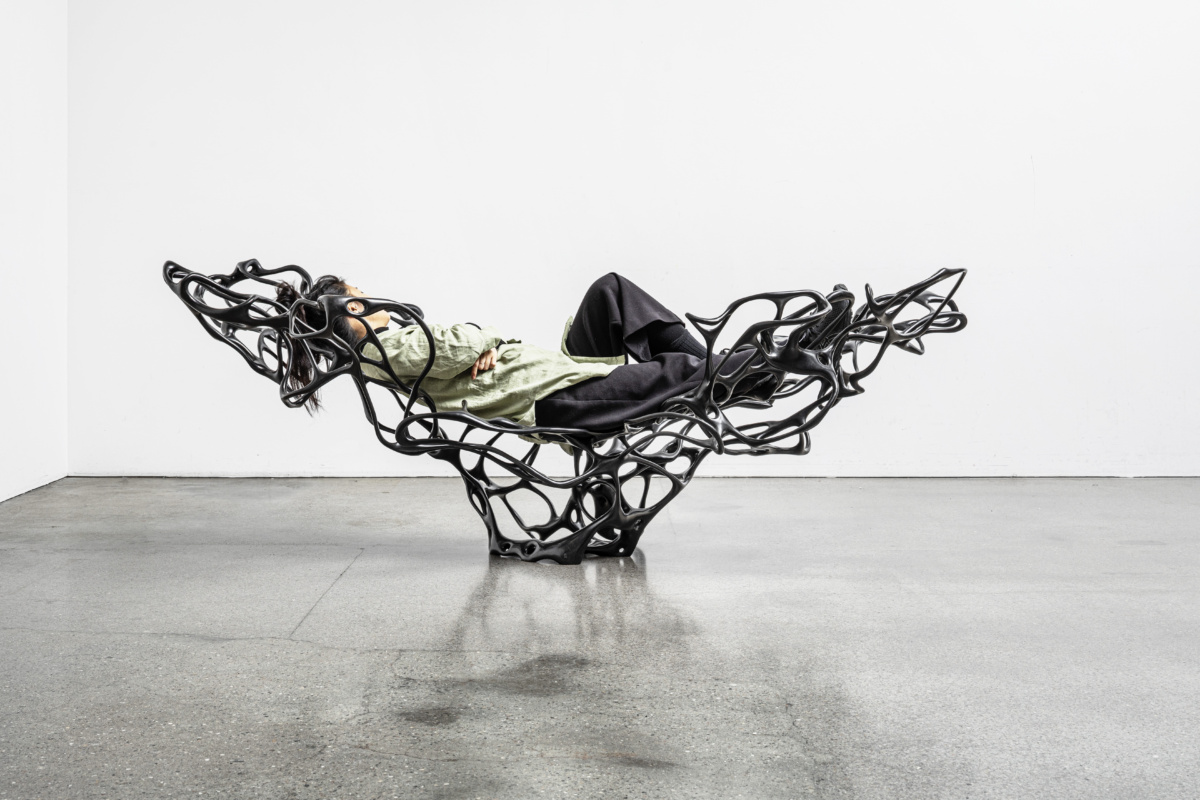
Growth chaise lounge, cast bronze from 3D printed molds
Danish artist and designer Mathias Bengtsson is redefining what Danish design can be by exploring new technologies, like 3D printing. His works like the Spun Chaise Lounge, made of spun carbon fiber thread, have been exhibited worldwide, including at the MoMA, Centre Pompidou, and Cooper Hewitt museums. In 2017, he created the Growth collection with Galerie Maria Wettergren, for his first solo exhibition on view during Paris Design Week.
The series of furniture-like-sculptures explores how software and art relate, with 3D printing as the channel of communication between the two. Mathias created a series of looping, almost cellular structures made of industrial materials: 3D-printed resin, bronze, walnut, and titanium. The chaise lounge, tables, and other pieces test their structural limits, delicate and sinuous but sturdy and certain all at once. The collection reveals the complex relationship between nature and technology, materiality and function.
12. Tamu by Patrick Jouin ID
- Photo by Thomas Duval
- Photo by Thomas Duval
Upon discovering 3D printing Patrick Jouin felt a world of possibilities before him. New materialities and structures inspired him to make the SOLID collection in 2004, the first collection of scaled furniture with the technology. As time passes, the designer continues to experiment with 3D printing, as with the Tamu collection from 2019, made with Dassault Systemes.
Tamu is borne from the idea of origami, a foldable chair made using the least possible amount of material. It relies on tension and weight to stand up, so the person-to-chair relationship is crucial to its structural soundness. A light mesh coats the chair to make it ergonomic and comfortable.

